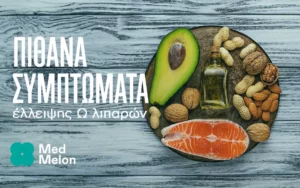Scientific Names of Açai Berry:
Euterpe oleracea Mart. [Fam. Arecaceae],
Forms:
Berry; Berry juice; fruit pulp; berry extract
Traditional Usage:
– Anti-aging
– Anti-aging Super-food
– Antioxidant
– Beauty Tonic
– Bone and Joint Health Maintenance
– Cellular Regeneration and Cleansing
– General Health Tonic
– Heart Health Maintenance
– High Cholesterol
– Hypercholesterolemia
– Inflammation
– Nutrient source
– Osteoarthritis
– Tonic
– Prostate Health Maintenance
– Urinary Tract Health
Overview:
Açai (ah-sigh-ee) berries, Euterpe oleracea Mart. [Fam. Arecaceae], also known as cabbage palm berries, are dark purple berries very similar in appearance to saw palmetto berries of the same plant family, that are very rich in antioxidants, essential amino acids, essential fatty acids, minerals, phytosterols and some vitamins such as thiamine. Açai fruit is used as a food and consumed raw and also as a juice prepared by maceration of the fruit. The juice is also used commercially in making ice cream, jelly, and liquors and as a natural food colorant. Açai berries wild harvested from the rainforests of Brazil are described as tasting like a vibrant blend of berries and chocolate. Açai berries have a remarkable concentration of antioxidants to help combat premature aging, with 10-30 times the anthocyanins (purple colored antioxidants) of red wine. It has more antioxidant content than cranberry, raspberry, blackberry, strawberry, or blueberry. Recent studies have shown that the antioxidant capacities of all purple Açai berry samples were excellent against peroxyl radicals, good against peroxynitrite and poor against hydroxyl radicals compared with common European fruit and vegetable juices analysed. One white Açai variety tested had very low antioxidant activity. Açai berries also contain monounsaturated (healthy) fats, dietary fiber and phytosterols beneficial for prostate and urinary tract health. As a medicine, açai berry is used orally for treating osteoarthritis, hypercholesterolemia and for improving general health. Açai berries also have strong activity against abnormal cell growth. The effects of Açai polyphenolics on the antiproliferation and induction of apoptosis in HL-60 human leukemia cells were recently investigated and were found to reduce cell proliferation from 56 to 86% likely due to caspase-3 activation (apoptosis). Açai gained popularity in North America after being promoted by Dr. Nicholas Perricone as a “Superfood for Age-Defying Beauty” on the Oprah Winfrey show.
Active Ingredients:
The main active constituents of Açai berries include: flavonoids and other polyphenols including catechin, epicatechin; gallic acid; ellagic acid; ferulic acid; p-hydroxy benzoic acid; anthocyanins including cyanidin-3-glucoside and pelargonidin-3-glucoside. The phenolic compounds in purple Açai fruit pulp were identified in one study by high-performance liquid chromatography-mass spectrometry, and the two major anthocyanins identified were cyanidin-3-glucoside and cyanidin-3-rutinoside. Cyanidin 3-glucoside (1040 mg/L) was the predominant anthocyanin in Açai and correlated to antioxidant content, while 16 other polyphenolics were detected from 4 to 212 mg/L. The fruit pulp also contains about 4% protein and 12% lipids. Other constituents include calcium, phosphorus, iron, manganese, copper and thiamine. The juice is viscous and contains about 2.4% protein and 5.9% lipids. There are many different polyphenols in Açai berries and the contributions of the anthocyanins to the overall antioxidant capacities of the fruit were estimated to be only approximately 10%. Thus, compounds not yet identified appear to be responsible for the major part of the antioxidant capacities of the Açai fruit pulp. [Cordova-Fraga T, de Araujo DB, Sanchez TA, Elias J Jr, Carneiro AA, Brandt-Oliveira R, Sosa M, Baffa O. 2004. Euterpe Oleracea (Acai) as an alternative oral contrast agent in MRI of the gastrointestinal system: preliminary results. Magn Reson Imaging. 2004 Apr; 22(3): 389-93.]
Suggested Amount:
Açai berries are eaten as a food and have no typical dosage. The therapeutic dosage of anthocyanins and other flavonoids from other sources ranges from 200 to 1500mg daily and this dosage may be extrapolated to Açai berry extracts.
Drug Interactions:
None known.
Contraindications:
None known.
Side Effects:
None known.
References:
Del Pozo-Insfran D, Percival SS, Talcott ST. 2006. Acai (Euterpe oleracea Mart.) polyphenolics in their glycoside and aglycone forms induce apoptosis of HL-60 leukemia cells. J Agric Food Chem. 2006 Feb 22; 54(4): 1222-9.
Del Pozo-Insfran D, Brenes CH, Talcott ST. 2004. Phytochemical composition and pigment stability of Acai (Euterpe oleracea Mart.). J Agric Food Chem. 2004 Mar 24; 52(6): 1539-45.
Hassimotto NM, Genovese MI, Lajolo FM. 2005. Antioxidant activity of dietary fruits, vegetables, and commercial frozen fruit pulps. J Agric Food Chem. 2005 Apr 20; 53(8): 2928-35.
Lichtenthaler R, Rodrigues RB, Maia JG, Papagiannopoulos M, Fabricius H, Marx F. Total oxidant scavenging capacities of Euterpe oleracea Mart. (Acai) fruits. Int J Food Sci Nutr. 2005 Feb; 56(1): 53-64.
NaturalDatabase 2006. Acai. Published at: http://www.NaturalDatabase.com
© Copyright 1995 – 2006, Therapeutic Research. All rights reserved.




